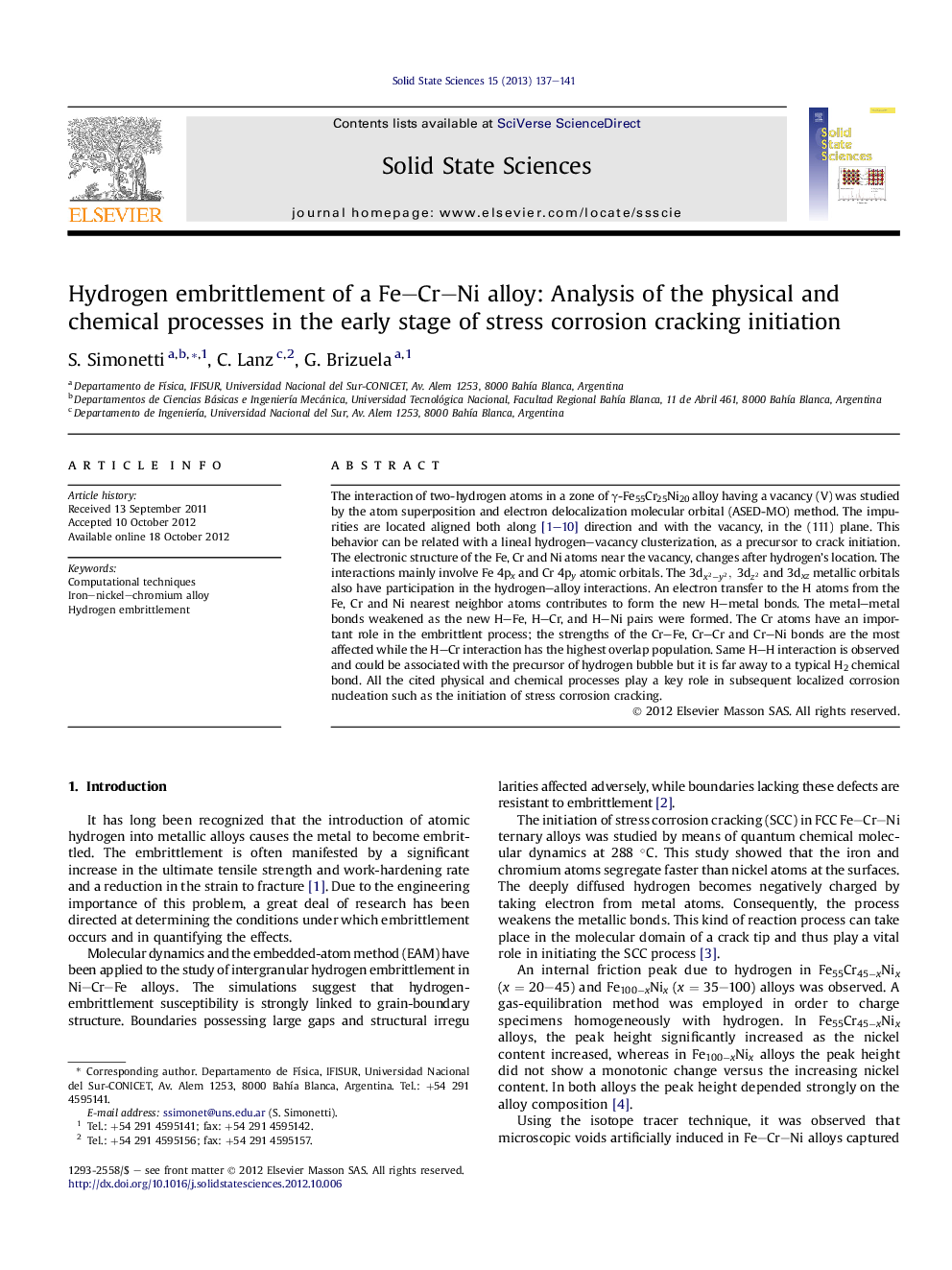| کد مقاله | کد نشریه | سال انتشار | مقاله انگلیسی | نسخه تمام متن |
|---|---|---|---|---|
| 1504874 | 1511007 | 2013 | 5 صفحه PDF | دانلود رایگان |

The interaction of two-hydrogen atoms in a zone of γ-Fe55Cr25Ni20 alloy having a vacancy (V) was studied by the atom superposition and electron delocalization molecular orbital (ASED-MO) method. The impurities are located aligned both along [1], [2], [3], [4], [5], [6], [7], [8], [9] and [10] direction and with the vacancy, in the (111) plane. This behavior can be related with a lineal hydrogen–vacancy clusterization, as a precursor to crack initiation. The electronic structure of the Fe, Cr and Ni atoms near the vacancy, changes after hydrogen's location. The interactions mainly involve Fe 4px and Cr 4py atomic orbitals. The 3dx2−y2,3dz2 and 3dxz metallic orbitals also have participation in the hydrogen–alloy interactions. An electron transfer to the H atoms from the Fe, Cr and Ni nearest neighbor atoms contributes to form the new H–metal bonds. The metal–metal bonds weakened as the new H–Fe, H–Cr, and H–Ni pairs were formed. The Cr atoms have an important role in the embrittlent process; the strengths of the Cr–Fe, Cr–Cr and Cr–Ni bonds are the most affected while the H–Cr interaction has the highest overlap population. Same H–H interaction is observed and could be associated with the precursor of hydrogen bubble but it is far away to a typical H2 chemical bond. All the cited physical and chemical processes play a key role in subsequent localized corrosion nucleation such as the initiation of stress corrosion cracking.
Figure optionsDownload as PowerPoint slideHighlights
► Hydrogens form a lineal vacancy clusterization, precursor to crack initiation.
► The metallic atoms electronic structure changes after hydrogen's location.
► Electron transfer contributes to form the new H–Fe, H–Cr, and H–Ni bonds.
► Metal–metal bonds are weakened, Cr has an important role in the embrittlent process.
► The initial H–H interaction is the precursor of hydrogen bubble.
Journal: Solid State Sciences - Volume 15, January 2013, Pages 137–141